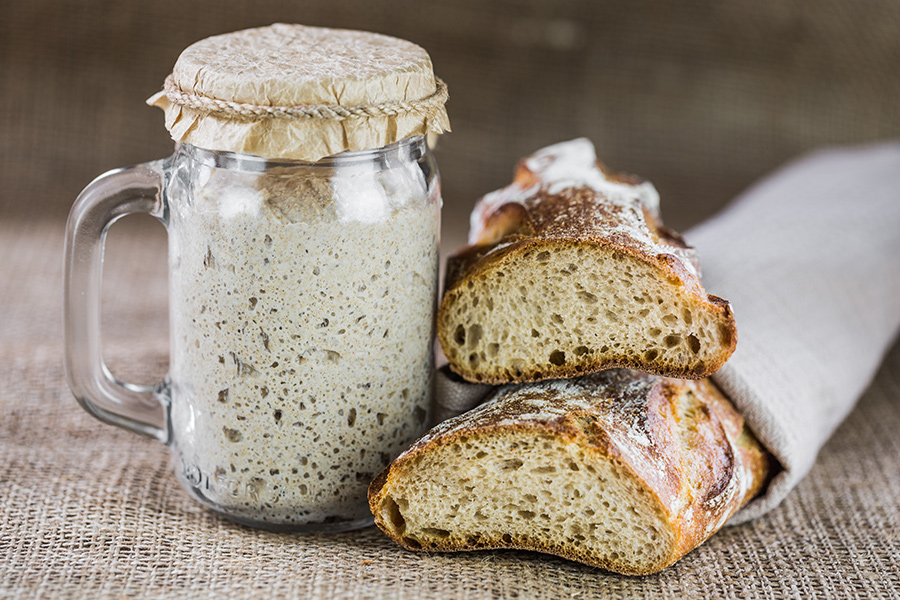Mysterious Starters
Friday, July 14, 2023
By: Renee Albers-Nelson
From working in the area of baking, I already knew the joys of working with wheat flour and water, creating a soft dough that is easy to shape, delicious and comforting to eat. But it took the coronavirus pandemic for a large portion of Americans to decide to try and understand baking. Then, when everyone stayed home longer, they explored the mysterious world of “starters.”
In my position, I had not been asked to help with many starter projects. However, I heard the topic discussed at workshops and read articles. Even online, people in baking help community groups were always asking if their starter was still safe to use because of its color or appearance. Then, they would complain about having time to adhere to the feeding schedule. Frankly, I was a bit deterred to explore this world of baking. Then, questions concerning starters began to become more frequent, so I decided there was no better way to learn than to begin my own starter.
When beginning a starter, you’ll need a container, either a practical one or one that has a romantic starter vibe, which would probably be a practical one, like a mason jar. The next choices to make are to just use wheat flour or wheat flour with another starch, to add yeast or use wild yeast and to feed in the morning or to feed in the evening … those are the questions that need answers before beginning.
Having had a starter now for over a month and even braving leaving it while on vacation, I have to say, caring for a starter is like having a pet … fish maybe. Fish like consistency, being fed about the same time of day. A new pet fish doesn’t show much interaction, but once it gets to know you and when it is time to eat, there is a frenzy of swimming and sometimes bubbles. On the days I consistently fed my starter, it had a nostalgic white, full and even appearance with bubbles throughout, similar to an about-to-flip pancake. When I completely forgot to feed my starter for one day, it looked thin and grouchy.
For those that don’t know, feeding a starter includes removing a portion of the starter from the container, which is called discard, and then replacing the amount removed with equal portions of wheat flour and water. The discarded portion can be thrown away or used as an enhancement for any baked product.
With the extra work, some people may wonder if the payout has been worth it. Are the baking products from a starter worth the effort? The best pancakes I have ever made for my family’s breakfast included my starter’s discard. They were beautifully browned, fluffy and light. Perfect. The country loaf bread I made was also wonderful and tasted more “homey” than regular homemade bread.
I haven’t experienced all the problems with my starter that I have read about, but I’m a newbie. However, I am intrigued by the process and look forward to years of foodie adventures in the area of baking.

